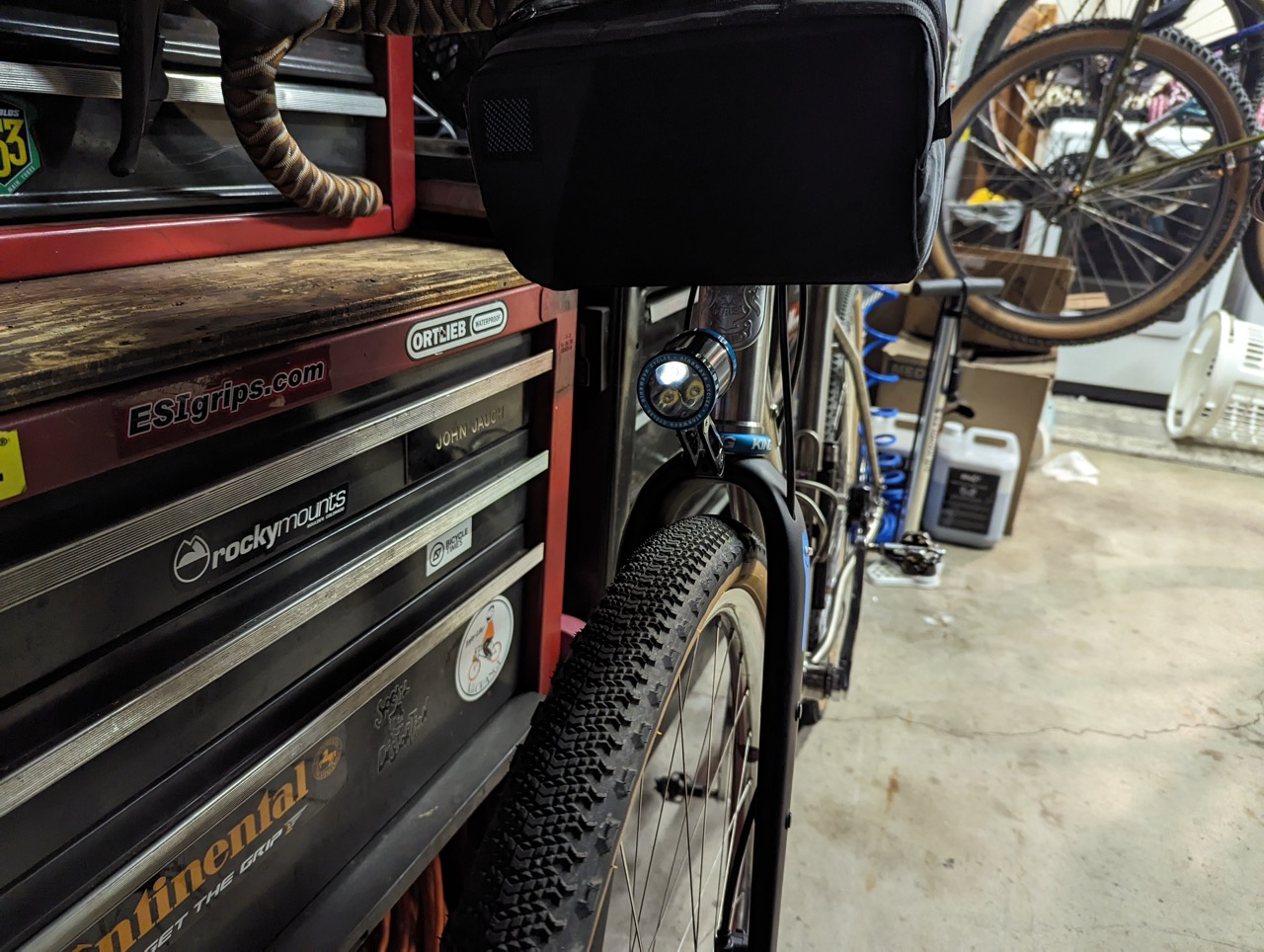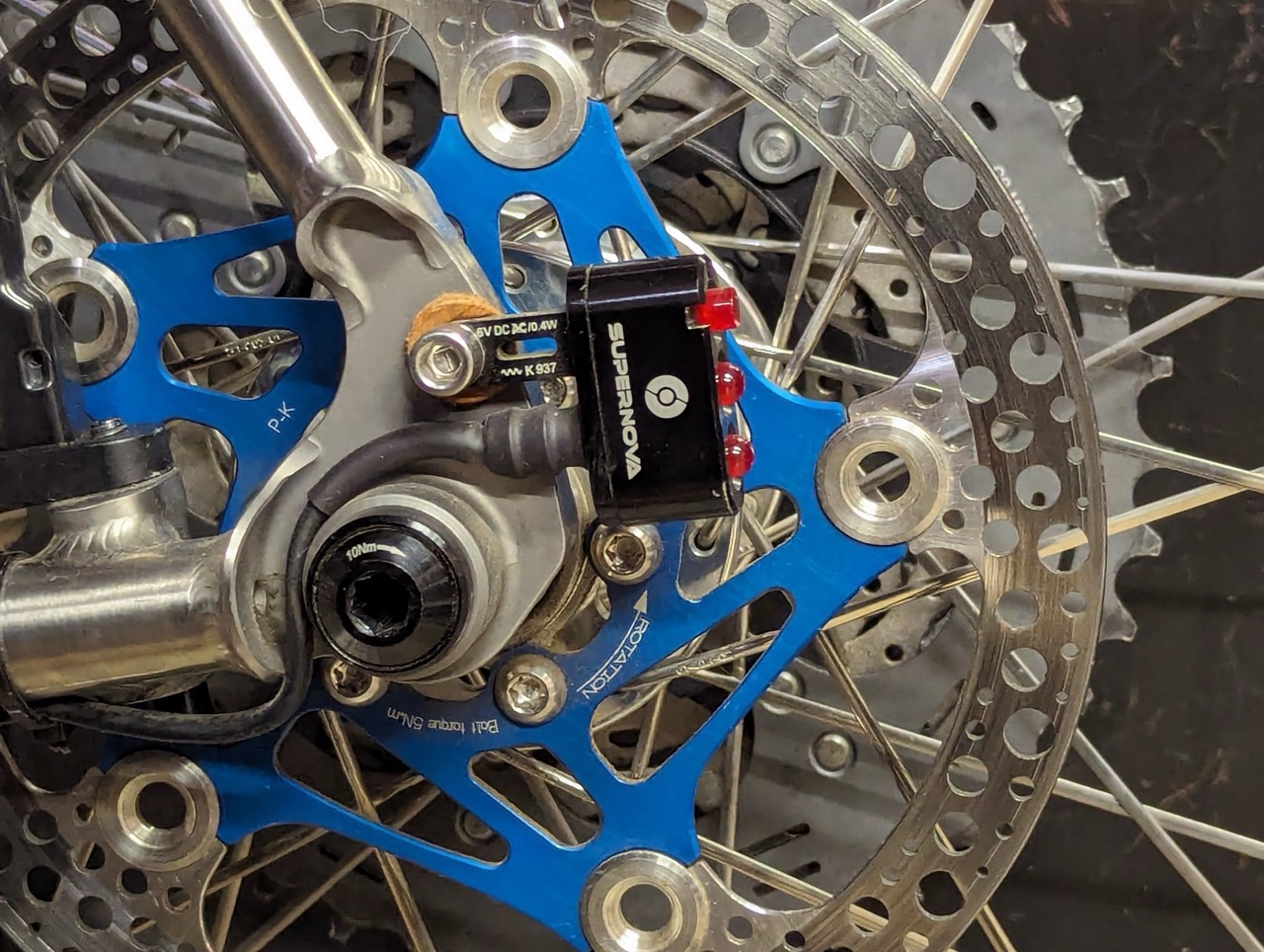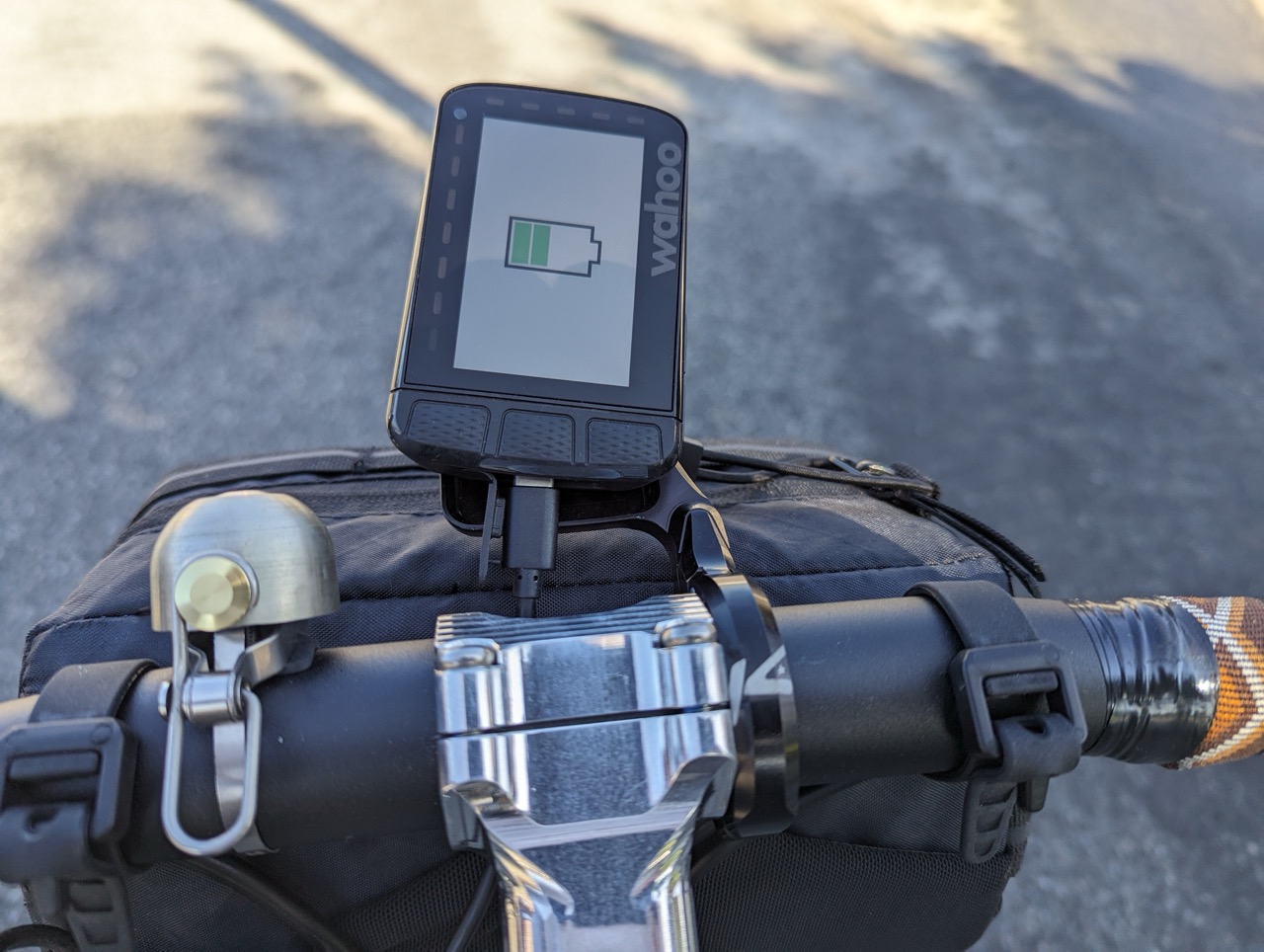Hey, let’s talk about dynamo power. I’m sold on it. It’s not free power, but pretty close to it (after the initial investment). There’s something neat about generating your own light. I’ve been riding with the Sinewave Cycles Beacon 2 front dynamo light for over a year, and so far I have not one complaint about the light’s performance.
It offers a bright, and steady beam of light that is flicker-free down to 3 mph. And it’s made here, in the USA. According to Sinewave the Beacon 2 is the “only commercially available dynamo light made in the USA”.
After you read this, you’ll see that it’s high time you get on the dynamo train.

The Sinewave Cycles Beacon 2 is one of the best dynamo lights on the market, in my opinion. And, I believe I can make that statement because, over the last 5 years or so, I’ve owned and operated some of the top-brand dynamo lights out there (the Beacon 2 included).
In this review, I’ll tell you why I think this lil’ dynamo light is almost perfect.
If you are dynamo curious, and want some stellar, in-depth info all about dynamo power, check out Bikepacking.com’s piece on it here.
But first…
Two Main Dynamo System Components
I feel like I need to go over the two main components of the dynamo game, the hubs and the lights.
Dynamo Hubs
The Sinewave Beacon 2 is best used by wiring it up to a dynamo hub. For this review, the Beacon 2 was used in conjunction with my SON 28-12 Disc dynamo hub on my Masi Incanto Ti gravel bike.
In the simplest terms, when the dynamo hub spins, it generates output power. The speed at which the dynamo hub turns dictates the amount of power it generates to the light (faster = more power). That, in turn, will dictate how bright the light is (faster = more power = brighter light). Cool?
The cost of a dynamo hub can run from pretty reasonable like the Shutter Precision PV-8 at $125, to pretty expensive, like the Schmidt SON28 12 at $378. And once you pick out and buy the hub, you have to factor in the cost of including the hub in the building of a new front wheel.
Most dynamo lights will not work independently, but the dynamo hub could (in theory) be used without the lights. I’m telling you this in case you spend all the money you saved on the hub purchase and wheel build and have nothing left for a light. I don’t want you to fret. Your bike is still ridable, dynamo hubs are still just hubs. Just install the dynamo wheel and continue to ride your bike.
Dynamo Lights
Most dynamo lights come with a switch on the back to turn it on or off. They usually include mounting hardware, and most certainly come with the wire already attached to the light. Usually, that wire includes a pigtail for powering an optional rear light using the front light as a powerslave.
With that in mind, the Beacon 2 comes with some neat extras, that the others don’t. We’ll touch on this a bit later in the review.
There are many dynamo lights to choose from on the market right now. Over the years, I’ve used three different brands of lights with my dynamo hubs. For my first dynamo light, I ran the Busch & Muller IQ-X on my old Masi randonneuring bike. Now, I’m currently using the Supernova E3 Pro 2 on both my mountain bike and my all-rounder. The Beacon 2 is being used on my gravel bike.
Okay, on to the review.
The Sinewave Beacon 2

This lil’ light packs an insane amount of dynamo tech in a really small package. The light itself measures only 58mm long, and 42mm wide/tall, it only weighs 115gr (including 36″ of dynamo wire). That’s impressive.
The Sinewave Beacon 2 is made to order with a $50 deposit. The total cost is $350 for black or silver and $390 for other colors. Check here for the colors available for custom orders.
I mixed and matched mine with different colored body and trim rings… black body and blue front and back trim rings. Looks sweet.
It’s designed for use in any kind of condition. It carries multiple seals and electronics that are potted in epoxy for additional protection against water. All of the connectors are gold-plated, to resist corrosion and the elements. It also comes with a 3-year warranty.

At 750 lumens (13+ MPH) I find it enough light for any of the styles of riding that I do. As mentioned earlier, I have this light on my Masi Incanto, and find it works perfectly for road/multi-surface day or night riding. And because it uses a symmetrical beam pattern, it’s awesome for night rides on my local MTB trails, including some fast nighttime singletrack.
Some Unique Features

One of the most unique features of the Beacon 2 is the input and outputs on the back. One is for the use of an external off-the-shelf USB battery pack and the other is an integrated USB charger. That means that you can charge your phone, GPS, or any other USB device directly from the Beacon while riding, without the need to buy or bring a charger.



You do receive a USB-to-DC cable for powering the Beacon with a USB battery pack. As an option, there is an available 20cm long, right-angle USB extension for the times when it is tight behind the Beacon and you need clean cable management.
There is also a three-way toggle switch on the back to either turn the light completely off, run at full brightness, or switch to a lower brightness setting. The lower brightness setting will also make it easy for power sharing when charging an accessory.
Flicker-Free
The Beacon 2 optimizes its dynamo power for slower speeds. Where other lights might flicker or pulsate at slower speeds, like a steep climb, the Beacon 2 remains very stable, with consistent, although dimmer light. I climb at slow speeds, so this was a plus for me.
The Beacon’s power output works like this: the light reaches 100 lumens at 5mph, 375 lumens at 8mph, 600 lumens at 10mph, and the full 750 lumens at 13mph.

It also offers a standlight. A standlight is just what it sounds like. While riding, the Beacon 2’s supercapacitor gets charged up, so when you stop moving, the light will “stand” on for about 5 minutes. This is great for being seen while waiting at stoplights or waiting for a friend on a dark trail. The standlight can be turned off with the toggle switch.
Beacon 2 Installation

There is no mounting hardware when you receive the Beacon 2, but the 10mm mounting tab is compatible with mounting hardware from Busch & Muller, Supernova, Schmidt, etc. I used the Supernova mount to mount mine.

What does come with the Beacon 2 is the light, the 36″ of attached wire that goes to the hub, and the USB-to-DC cable. The Beacon 2 does not come with connectors for the hub.



The reason is, that the light can be used with any 3w/6v dynamo hub. When you purchase your dynamo hub, the connectors and fittings that attach the wires from the light to the hubs, will come with that particular hub.

I soldered and used shrink wrap on the connectors for the SON 28 hub. If you don’t know how to solder or don’t feel comfortable doing it, your local bike shop should be able to get it done for you.
How’d it Perform

As I’ve mentioned before, dynamo lighting is now an essential bit of gear that I prefer to use on every one of my bicycles. I will probably continue to use dynamo tech for most if not all of my future builds.


Since installing the Beacon 2, I’ve paired it with a Supernova E3 TL2 tail light for added visibility while riding on the roads. There’s a hidden and silent benefit to using a dynamo light. It’s the luxury of never having to worry about a light’s battery or a battery’s run time.
The fact that I can plan a last-minute night ride on my MTB, or run to the store at night and not worry about making sure I always have a light charged and ready to go… is awesome.
Bright Light
With the Beacon 2, it’s just automatic. I start rolling and have bright and powerful light ready when I am. During daytime riding, it’s nice to know that I am being seen by motorists… having it makes me feel safer. And, the night-riding benefits are obvious. I found the Beacon 2’s beam to be a “cool” white, roundish, wide pattern that makes it more than sufficient for fast off-road riding.
While night riding on some of my favorite trails, the light output, as expected, got a little dim on the steeper climbs. But, I was climbing/rolling really slow, and that’s how dynamo lights work. But with the Beacon 2 the light output never flickered, and that’s one of the Beacon 2’s highlights. The light provided by my Beacon 2 always remained steady.
The three different LED lights that are in the Beacon 2 illuminate separately. One light at a time as your speed (and the power from the dynamo hub) increases. This is done without any indication that it’s happening from the cockpit.
Charging
I didn’t really find myself needing to charge a lot of accessories while I’ve had the Beacon 2. I did charge my Wahoo Roam a little and it seemed to do a good job. The ability to charge is something nice to have around, even though you may not use it all the time.

I use my phone to snap a lot of pictures while riding. On longer rides, I found it a real piece of mind that I could charge my phone if I needed to, And, it’s a stat-saver if you’ve grabbed an almost depleted bike computer for a ride, and need to keep it going.
Unless you are on a self-supported, multiple-day bikepacking excursion or a long endurance race, the everyday user probably won’t need the ability to charge.
In Conclusion
The Beacon 2 is a fantastic dynamo light. It packs a bunch of power and extras in a tiny package. If you are commuting by bike, or on the road with motorists at any time, for any duration at all, I believe riding with a light greatly minimizes your chances of not being seen. And having a light system that you can literally forget about is blissful.
You don’t have to be backpacking through Baja, Mexico, traversing the Continental Divide, or doing the Race Across America, to take advantage of what the Sinewave Beacon 2 dynamo light has to offer.
It’s made here in the USA, its construction is of the highest quality, and it gives you the peace of mind of having a light and charging source with you at all times while riding your bicycle.


